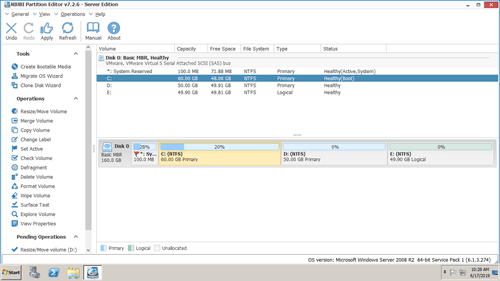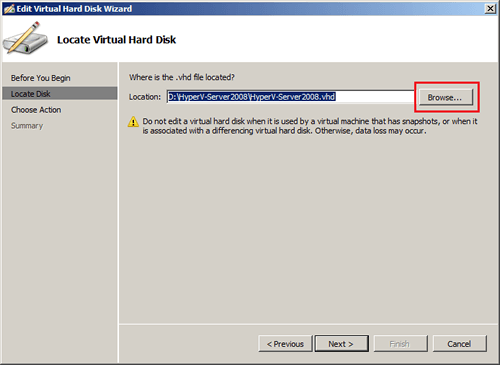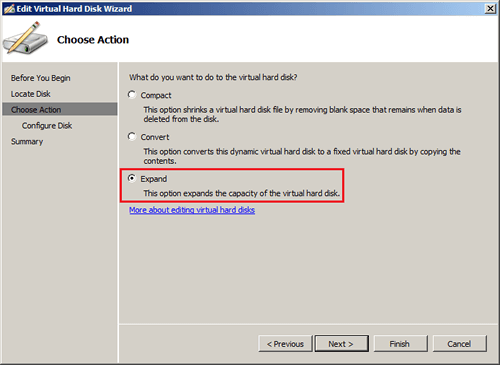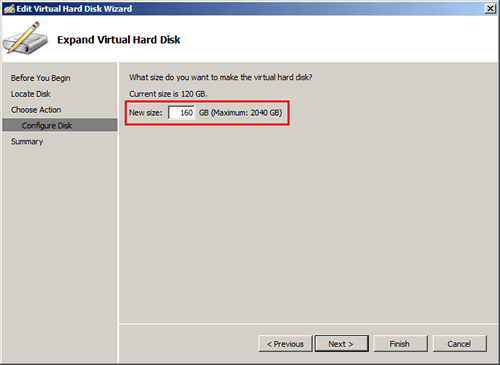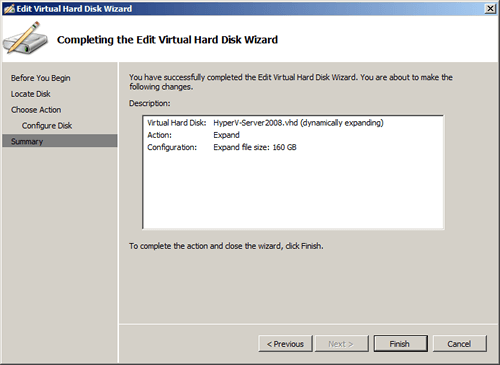This article introduces how to resize Windows Server 2008 partition in VMware/Hyper-V, shrink and extend Server 2008 partiiton in VMDK/VHD without losing data.
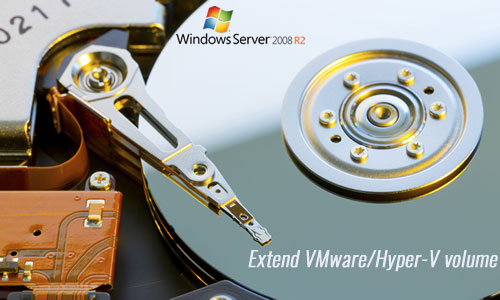
How to resize virtual partition in VMware/Hyper-V
Many servers are running as guest in VMware or Hyper-V, comparing with physical server, the virtual servers have advantages while resizing disk partitions. For example:
- The size of physical hard disk is fixed, so before extending a partition, there must be free unused space space in other partition on the same disk. In there is no free space in whole disk, you have to copy to other larger disk. But in either VMware or Hyper-V guest server, you can increase the size of VMDK/VHD disk to get additional space without losing data.
- In virtual servers, you can add new disk easily and in a short time.
- You can set to boot with BIOS or UEFI easily.
In most of physical and virtual servers, there is available free unused space in a partition, so you just need to shrink it to get unallocated space. Then this space can be used to create new or expand other volume without losing data.
Firstly, let's see how to resize VMware/Hyper-V virtual partition with available free space.
Download and install NIUBI Partition Editor to the virtual server, then you'll see all virtual disk partitions with structure and other information on the right, available operations to selected disk or partition are listed on the left or by right clicking.
To resize virtual partition for Windows 2008 server in VMware/Hyper-V: right click any NTFS or FAT32 partition and select "Resize/Move Volume". There are 2 options in the pop-up window.
If you drag left border towards right, unallocated space is made on the left.
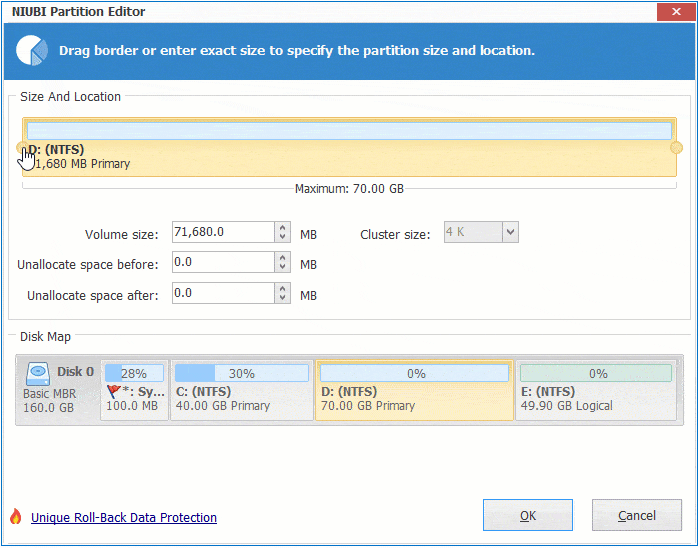
If you drag right border towards left, unallocated space is made on the right.

You may also enter an amount manually in the middle boxes.
How to extend C drive (system partition) in virtual server
Follow the step above to shrink the right contiguous partition (D: or E:) to make unallocated space on the left. In my server, it is D, in some servers, it is E. When there is contiguous unallocated space, follow the step to extend system partition C for Windows 2008 server in VMware or Hyper-V.
Right click system C: drive and select "Resize/Move Volume" again, drag the right border towards right in the pop-up window.
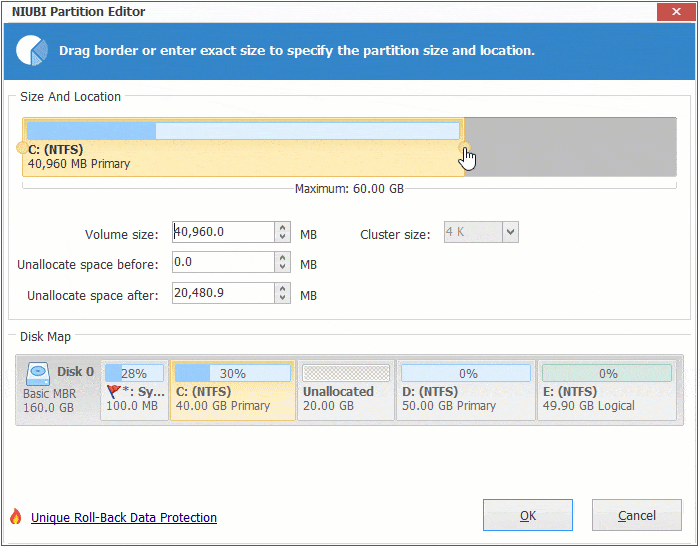
If there is not enough free unused space in the right contiguous partition, you can shrink any non-adjacent partition instead. Before merging unallocated space to C drive, there is an addition step to move unallocated space from right to the left.
Follow the steps in the video to resize and extend virtual partition for Windows 2008 server in VMware (or Hyper-V).
How to increase size of VMDK/VHD virtual disk
If there is no available free space in whole disk, you need to copy to another larger one for physical server. But to VMware/Hyper-V virtual server, you can increase size of VMDK/VHD virtual disk directly.
Steps to increase/expand virtual disk size of VHD in Windows Server 2008 R2:
Step 1: Open "Server Manager" next to "Start" menu, expand Roles on top left and then Hyper-V > Hyper-V Manager > your own, click "Edit Disk" on the right.
After expanding, additional space will be shown as unallocated at the end of original disk. Then follow the steps in the video to merge unallocated space to the virtual partition(s) that you want to extend.
If you want to extend several virtual partitions, combine part of unallocated space to each partition.
Follow the step to increase size of VMware virtual disk.
Comparing with other software, NIUBI Partition Editor is much safer and faster because of its powerful technologies:
- Virtual Mode - all operations will be listed as pending for preview, real disk partitions won't be modified until click "Apply" to confirm.
- Cancel-at-will - if you applied wrong operations, you can also cancel the ongoing operations without losing data.
- 1 Second Rollback - if encounter any error while resizing partition, it automatically reverts server to original status in a flash.
- Hot Clone - clone disk partition without server interruption, you can boot from the clone disk immediately if system disk goes wrong.
- Advanced file-moving algorithm - move and extend partition 30% to 300% faster, saving much time especially if there are large amount of files.
As a disk partition management tool, it helps do many other operations such as merge, copy, convert, wipe, hide, scan partition, etc.


